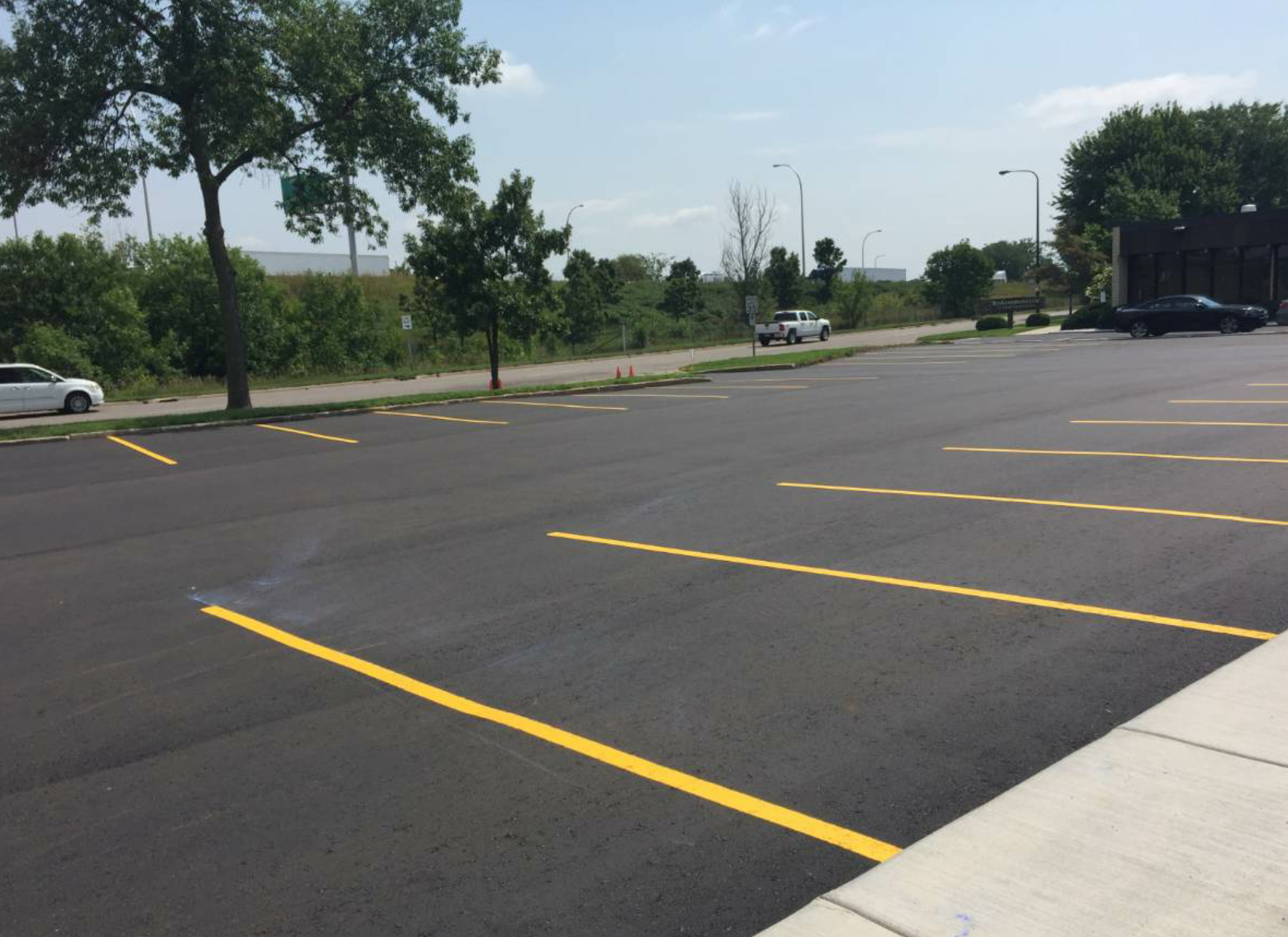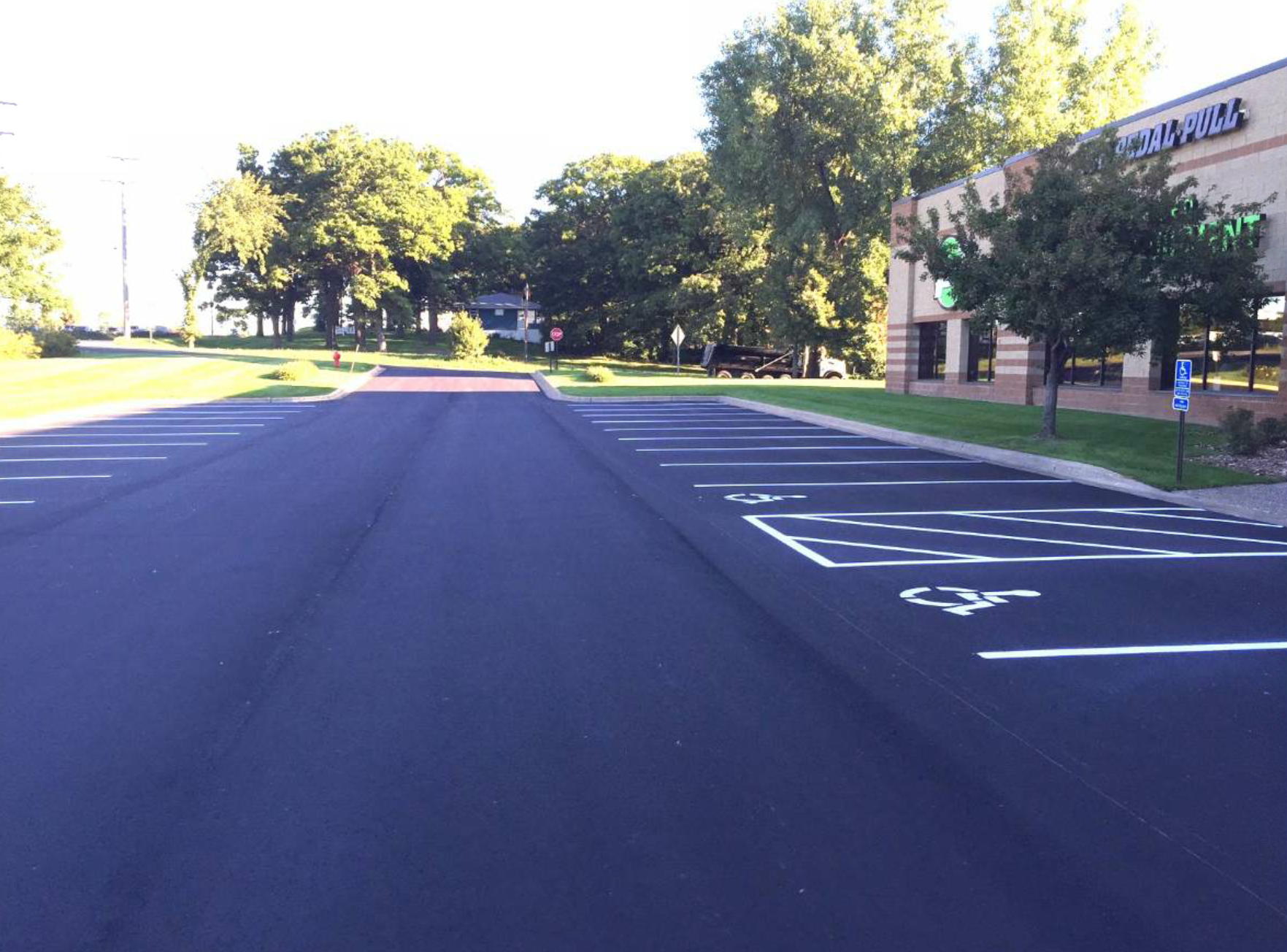When Sealcoating Isn’t Enough: How to Sell Your Customers on Replacing, Resurfacing or Patching
BY Bea Bonte

Cracks, wear and potholes are telltale signs of asphalt damage, leaving many property owners and managers searching for the best way to resolve these issues while keeping their asphalt in good condition. Oftentimes, those responsible for maintaining parking lots will default to sealcoating as the solution to various problems with asphalt.
For asphalt pavement that has minor wear with some cracks, fissures or small holes, repairing the damaged areas and then sealcoating is a smart, easy way to improve the appearance and longevity of the parking lot. It also tends to be the most cost-effective method to extend its life.While sealcoating is a part of regular asphalt maintenance, and can help solve some surface issues, it isn’t always the answer.
Some property owners may not understand that there are times when sealcoating simply isn’t enough. For example, a surface may have too many cracks, or even alligator cracking, which would make sealcoating ineffective. Additionally, if the asphalt is deteriorating or settling, it needs more attention than sealcoating can provide. In these cases, sealcoating is simply a Band-Aid™ fix that ignores the deeper problems.
As asphalt professionals, it is our job to educate customers on when sealcoating is and is not effective, and to present the various paving options available. It all starts with a baseline assessment of the parking lot to identify the problems and what their potential causes may be. From there, consult with the customer about the solutions that will help address the issues and leave them with a beautiful, smooth asphalt surface.
While some of these repairs may be more extensive than a surface-level sealcoating solution, the property owner’s goal is to improve the professional appearance of their building, potentially increase business, or help justify an upcoming rent increase. Additionally, they need to consider the safety and liability of holes and cracks in the parking lot surface.
Find the Right Solution

Some parking lots are good candidates for a simple sealcoat and restripe to freshen their appearance and seal out water.
If sealcoating doesn’t make sense for the parking lot that you’re assessing—and your customer is on board with taking the next step—you’ll need to identify which solution best fits his needs: patching, resurfacing or replacement.
Patching:
This method tends to work best for surfaces with minor potholes or isolated areas of damage. Patching is an easy solution for customers to understand because it is addressing the physical deterioration of the surface. Depending on the severity of the damage, the project may require asphalt removal and base work, mill patching, or skin patching.
No matter which patching solution you recommend, help the client understand that it must be done by a trusted professional who can determine the correct process and ensure the longevity of the asphalt surface.
Overlay/Resurface:
For mildly aging or moderately damaged asphalt, an overlay is a great way to rejuvenate the parking lot without having to start from scratch. This middle-of-the-road option can appeal to customers who are wary of a complete replacement.
As with some patching repairs, milling may be required to clear out the edges to make for a cleaner foundation where the new asphalt layer meets surrounding surfaces such as concrete sidewalks.
Replacement:
For property owners with excessive damage—such as long cracks, deep potholes and crumbling surface areas—a replacement is in their best interest. A parking lot replacement generally involves removing the old asphalt surface and repaving the area in one or two lifts, depending on the amount of use. By removing the old asphalt, any base failures can easily be addressed.
Another sure sign that a replacement is the right remedy is if there are noticeable drainage or settling issues, or if the asphalt is failing in general, especially in parking lots. Customers may be turned off by the prospect of a major project, but it is important to counsel them that a full replacement is not as time consuming as they may think. Of course, unknown factors such as weather and moisture can impact that timeline, but generally the inconvenience and time requirements are minimal.
An experienced asphalt professional will also be able to talk through the investment and benefits of each of these options, and why it may make more sense to get to the root of the issue and pay more upfront, rather than to cosmetically mask the issue through sealcoating.
Looking Ahead

Milling could be required to get a good edge to meet surrounding surfaces such as concrete sidewalks.
With the right maintenance and care, a new asphalt surface is expected to last 20 to 30 years, which is a great selling point for customers. However, asphalt requires regular care and maintenance, and it is important that a customer understands the basics to protect and preserve the surface, whether it has been patched, resurfaced or replaced.
Have cracks filled.
Areas with vast temperature swings throughout the seasons can lead to shifting soil and put strain on asphalt surfaces. While cracks are not uncommon, instruct customers to have them professionally filled as they appear. A hot rubber crack sealant will not only fill the cracks, but also protect the base from damage.
- Gasoline, motor oil and other chemicals can wear down the surface of asphalt—particularly in high-traffic parking lots. Tell customers to monitor for any leaks from vehicles. If a spill or leak does occur, tell them to clean it as soon as possible.
- Remove weeds and other plants that grow through. Keep an eye out for weeds that may push through asphalt, particularly at cracks or along edges. While it may seem like a small thing, vegetation can have a large impact if left untreated. Spray-on weed killers are a good way to stay ahead of this problem.
- Sealcoat regularly. This will help to protect the asphalt from the elements and prolong its life. Caution your customers to allow the sealant to wear off between coatings so the sealant itself doesn’t build up and cause damage to the asphalt underneath. Also discuss the various sealcoating products and processes available (asphalt emulsion, chip sealing, etc.) to help your customer choose the one that’s right for his parking lot.
Asphalt professionals need to be able to lay out all the options for customers when it comes to maintaining and repairing their surfaces—especially when sealcoating isn’t enough. The decision to patch, resurface and especially to replace asphalt is a big one, and it’s important for customers to feel confident in their investment.
Bea Bonte is a Marketing Associate for Alpine Asphalt, a residential and commercial paving company serving the Minneapolis area. She enjoys providing useful tips for customers as well as industry professionals. For more information, visit http://alpineasphalt.com.
